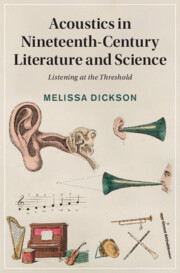Book contents
- Acoustics in Nineteenth-Century Literature and Science
- Cambridge studies in nineteenth-century Literature and culture
- Acoustics in Nineteenth-Century Literature and Science: Listening at the Threshold
- Copyright page
- Contents
- Figures
- Acknowledgements
- Introduction Whispers in the Roar
- Part I
- Part II
- Part III
- Part IV
- Conclusion
- Notes
- Select Bibliography
- Index
- Cambridge studies in nineteenth-century Literature and culture
- References
Select Bibliography
Published online by Cambridge University Press: 13 December 2024
- Acoustics in Nineteenth-Century Literature and Science
- Cambridge studies in nineteenth-century Literature and culture
- Acoustics in Nineteenth-Century Literature and Science: Listening at the Threshold
- Copyright page
- Contents
- Figures
- Acknowledgements
- Introduction Whispers in the Roar
- Part I
- Part II
- Part III
- Part IV
- Conclusion
- Notes
- Select Bibliography
- Index
- Cambridge studies in nineteenth-century Literature and culture
- References
- Type
- Chapter
- Information
- Acoustics in Nineteenth-Century Literature and ScienceListening at the Threshold, pp. 270 - 290Publisher: Cambridge University PressPrint publication year: 2024

